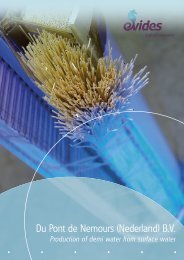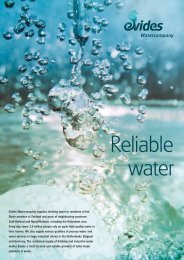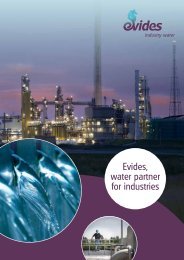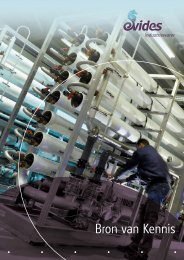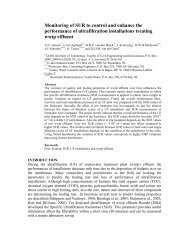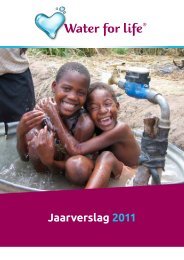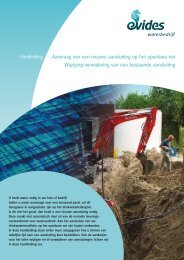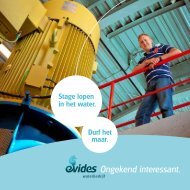DWP Botlek - Evides
DWP Botlek - Evides
DWP Botlek - Evides
You also want an ePaper? Increase the reach of your titles
YUMPU automatically turns print PDFs into web optimized ePapers that Google loves.
Introduction<br />
<strong>Evides</strong> Industriewater has been supplying high quality demineralised<br />
water from <strong>DWP</strong> <strong>Botlek</strong> to a large number of chemical and<br />
petrochemical companies in the <strong>Botlek</strong>-Europoort area since<br />
1 January 2010 and this has secured the supply of demineralised<br />
water to the port-industrial complex of Rotterdam for the coming<br />
years. With a capacity of 1,400 m 3 per hour, <strong>DWP</strong> <strong>Botlek</strong> is the biggest<br />
customised plant that <strong>Evides</strong> Industriewater has realised up<br />
to now. After extensive consultation with the industry, and working<br />
in close cooperation with Port of Rotterdam, <strong>Evides</strong> realised this<br />
multi-client, demineralised water plant on the Huntsman Holland<br />
BV site. <strong>Evides</strong> has a double ring pipe system available which supplies<br />
the water to the <strong>Botlek</strong>-Europoort area.<br />
<strong>Evides</strong> Industriewater has supplied distilled water to the industry in<br />
the port-industrial complex of Rotterdam area since the seventies.<br />
This distilled water has now been replaced with high quality<br />
demineralised water which is produced using the most up to date<br />
technology.<br />
The production of gases, energy and water with multi-client plants<br />
and supplying them as commodities to a large number of customers<br />
is a common strategy in industrial areas. Having a shared<br />
infrastructure and a strongly cross-linked base of raw material<br />
suppliers - based on the concept of co-siting where industries are<br />
closely linked to each other through the production and intake of<br />
each others products and commodities - ensures that costs are<br />
lowered, the production area required is reduced and that operational<br />
stability is increased.<br />
Technology and Sources<br />
<strong>DWP</strong> <strong>Botlek</strong> uses surface water from the Brielse Meer as a source<br />
and drinking water from the Berenplaat (Spijkenisse) production<br />
location as a back-up. The plant was designed to take in and process<br />
both types of water. <strong>DWP</strong> <strong>Botlek</strong>’s process design takes into<br />
account the consequences of incidental salination of the Brielse<br />
Meer due to climate change and possible structural salination resulting<br />
from government measures (Kierbesluit Haringvliet: Decision<br />
to leave the Haringvliet sluices ajar).<br />
<strong>DWP</strong> <strong>Botlek</strong> consists of a combination of ion exchange and membrane<br />
technology. The use of membrane technology as the main<br />
desalination stage makes the system less subject to the salt concentration<br />
in the supply water than with ion exchange technology.<br />
Process stages<br />
Pre-purification: DAFF (a combination of coagulation, dissolved<br />
air flotation and sand filtration) is used to remove seasonal algae<br />
bloom before the water goes through the main process.<br />
Demineralisation: The pre-treated water first passes through a<br />
softening stage where the water hardness is lowered in order to<br />
reduce scale build-up on the membranes. The main desalination<br />
stage is then carried out in the reverse osmosis (RO) plant.<br />
The raw demineralised water is then further purified in the mixing<br />
bed ion exchange stage (IX) to the required quality of the demineralised<br />
water.





